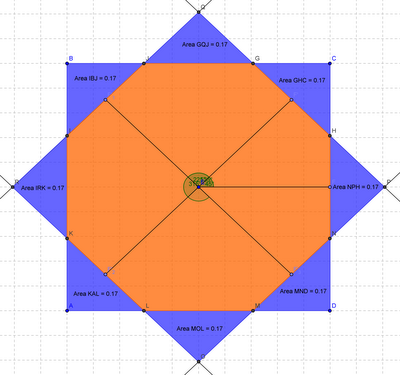It is very hard to develop an active atmosphere in a math classroom–especially at the high school level. I believe there are two main reasons for this: 1) Students have been slowly trained throughout their schooling that a “good” math student is one that listens, absorbs, and repeats. 2) The content often reaches beyond what most teachers deem to be “constructable”. Rather than fight with these two restraints, I began my implementation of Problem Based Learning in a class with manageable curriculum content filled with students who never learned to sit still in the first place.
As time progressed, the room slowly took the form that best suited the class. Skills were introduced with complex, engaging problems and worked on in a collaborative setting. As the basic skills with the content and various technologies were honed, I moved them into a more open-ended, project-based setting where they needed to mix initiative, critical thinking, and problem solving with their new found content skills to create rich mathematical experiences.
My role changed to that of a half-time tech support guy and half-time interested observer. In between battles with the unreliable wireless internet connections and antiquated laptops, I had chances to enter into discussions with students about their approaches to the tasks. More often than not, students find a familiar path and stick to it, but the best thing about the extra Independence of PBL is that students who are ready to expand have the freedom to pose new problems and search for solutions. Every so often a student will question the status quo, and it always leads to student empowerment.
There is nothing quite like the look on a student’s face when they realize that they have discovered a possible caveat or extension in a project or prompt. They are far more likely to take on a challenge that they create; the project setting opens up room for student problem formation.
I have a student in my class that took a modified pathway until Grade 10. To be honest, I was weary of putting her in such an independent environment. She recently provided the greatest moment to date in one of my PBL focused classes.
We were working on a very structured series of problems entitled, “Centimetre Cube Exploration”. It required the students to answer a variety of questions on surface area using ordinary centimetre cubes, GeoGebra, Microsoft Word, and Google SketchUp as their tools. A full handout can be downloaded here.
She had needed lots of support through the first few questions, and had landed on the question asking her to construct a 10-cube structure that had the maximum surface area. We talked about what caused the surface area to shrink. We developed the idea of overlapping sides, and how fewer overlaps meant a larger surface area. This was all great learning; this was the learning I expected. The great thing about the new ecology of mathematics I have developed is that I don’t always get what I expect.
Shortly thereafter, the student approached me with a 2-cube design in hand. It was simply two cubes stacked on top of one-another. Sensing another mundane fix, I rolled my chair over and she asked a question that made me look like a fool.

One reply on “Unexpected Lesson Extension”
Wicked. I love when students take me to school, open up a new extension problem, and I end up wishing I had an extra 20 minutes of class. And you handled it like a champ, well done.